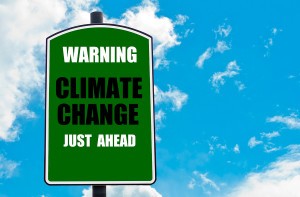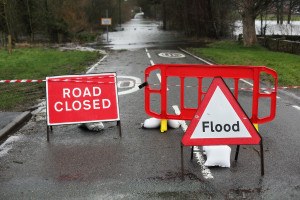 Climate change is creating insurance challenges in multiple ways.
Climate change is creating insurance challenges in multiple ways.
The National Climate Assessment, a report released by the U.S. Global Change Research Program argues that climate change increases the probability of heat waves, drought, heavy downpours, floods and hurricanes. More extreme winter storms are also likely as a result, the report concluded.
Experts suggest that the most recent flooding in Louisiana, Texas and Iowa are symptoms of a broader issue resulting from climate change.
Insurance implications are associated with all of these risks, according to Rod Taylor, environmental expert with Aon Risk Solutions.
In a podcast interview with Claims Journal, Taylor explained that a major impact of the recent damage resulting from extreme weather is that a majority of homeowners and businesses may not be insured for damage.
“People often don’t realize that homeowners’ insurance policies don’t cover floods,” said Taylor.
That’s because flood insurance is typically not offered in standard lines and consumers must purchase

insurance from the National Flood Insurance Program, operated by the Federal Emergency Management Agency (FEMA). Taylor explained that government operated insurance programs aren’t typically run well financially. As a result, rates are not high enough to cover losses each year.
“The flood insurance program has been a difficult problem for the U.S to address. It’s not operated on an actuarially sound basis, so the rates aren’t high enough to cover the losses that occur every year, Taylor said.
Since Hurricane Katrina, the losses that the NFIP has sustained are around $24 billion in the aggregate, he said.
Local governments can also hinder flood insurance purchase simply by not endorsing flood mapping, because they think they are sparing residents from expensive flood insurance. For example, statistics suggest the East Baton Rouge Parish in Louisiana sustained considerable flood damage. However, only about 6 percent of its residents had purchased flood insurance coverage.
Taylor said that many will remain uninsured for extreme weather-related damage unless major changes occur at the national level or insurers re-enter the market.
Many businesses can now expect to see higher flood premiums, larger flood deductibles and stricter underwriting standards.
Climate Change Creates Need for Risk Management Strategy
As climate change continues to affect weather-related damages, there is a greater need for risk management strategy, Taylor said.
Historically, personal lines insurers avoided the risk in some areas because state governmental agencies refused to allow insurers to charge appropriate rates for the risk. That’s why government insurance programs developed, explained Taylor.
“For example, in Florida, the largest insurer of windstorms is the state-owned insurance company called Citizens,” Taylor said.
 Because the rates charged for government programs are inadequate to pay the related-claims, the programs have to receive subsidies, sometimes paid through general taxes or surcharges on other insurance products sold in the state.
Because the rates charged for government programs are inadequate to pay the related-claims, the programs have to receive subsidies, sometimes paid through general taxes or surcharges on other insurance products sold in the state.
Insurers have offered insurance to cover extreme weather events for a long time, it just wasn’t identified as climate change insurance, he said. Rather, it’s known as flood insurance, windstorm coverage and wildfire insurance. Commercial insurance is available for extreme weather risks in Florida, Texas and Louisiana, said Taylor. Insurers work with policyholders to make sure properties are as prepared as possible for extreme weather events.
“The insurance industry is very much involved in this and looking…to be more involved if they can somehow convince local and state governments to make rates adequate they would participate in flood programs and windstorm programs even in high risk areas,” Taylor said.
Businesses are paying attention to changes in climate and weather-driven events, he said.
Most commercial account customers receive expert assistance to evaluate hazards their businesses face. These experts can provide modeling to reveal vulnerability and provide assessments of the potential for direct physical loss as well as contingent losses. The models are then used to estimate severity and frequency of losses.
Once businesses are aware of the potential hazards they face, they then work to develop risk management tools to address risks and review insurance coverage and limits. Some strategies to manage risk include businesses relocating facilities out of flood zones and moving computer equipment located below grade to higher floors, Taylor said.
*This story ran previously in our sister publication Insurance Journal.





















 Going, Going, Gone: ‘Disruption’ to Shrink Traditional Premiums for Auto
Going, Going, Gone: ‘Disruption’ to Shrink Traditional Premiums for Auto  E&S Property In Focus: Competition Up, Price Momentum Waning
E&S Property In Focus: Competition Up, Price Momentum Waning  Cat Losses, Auto and HO Price Hikes Continue at Allstate
Cat Losses, Auto and HO Price Hikes Continue at Allstate  P/C Insurance Execs, Underwriters Out of Sync on Advanced Tech
P/C Insurance Execs, Underwriters Out of Sync on Advanced Tech 







